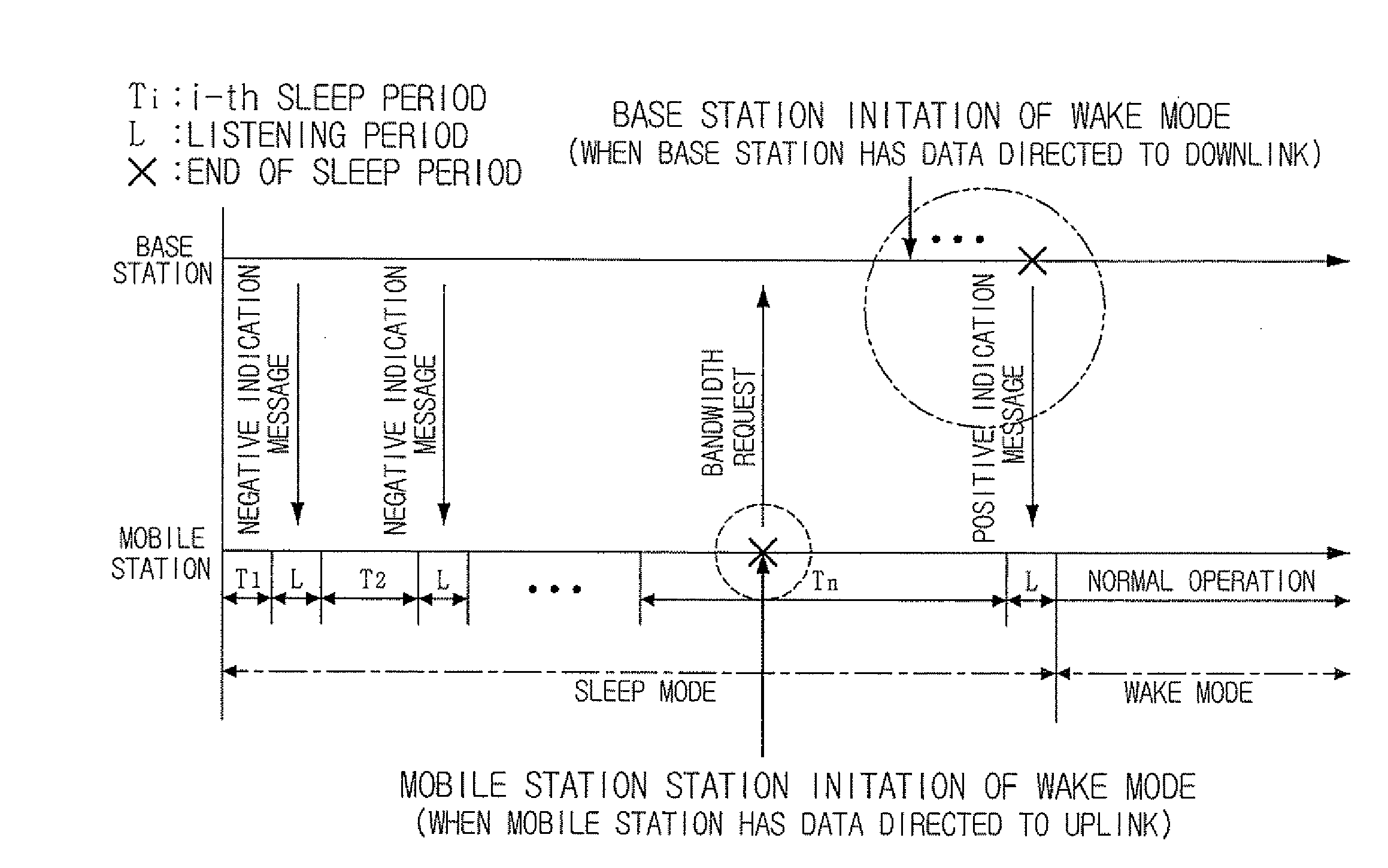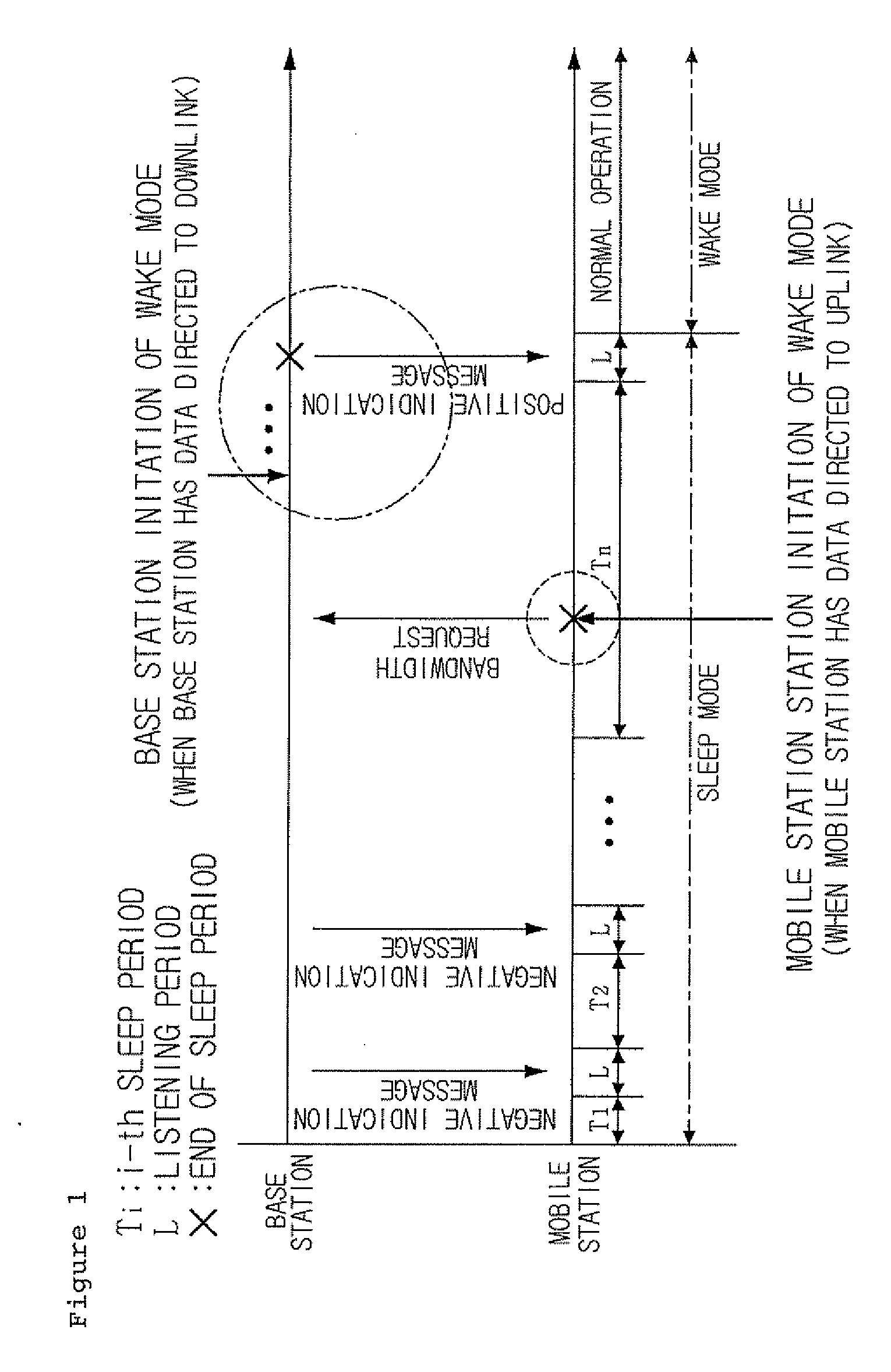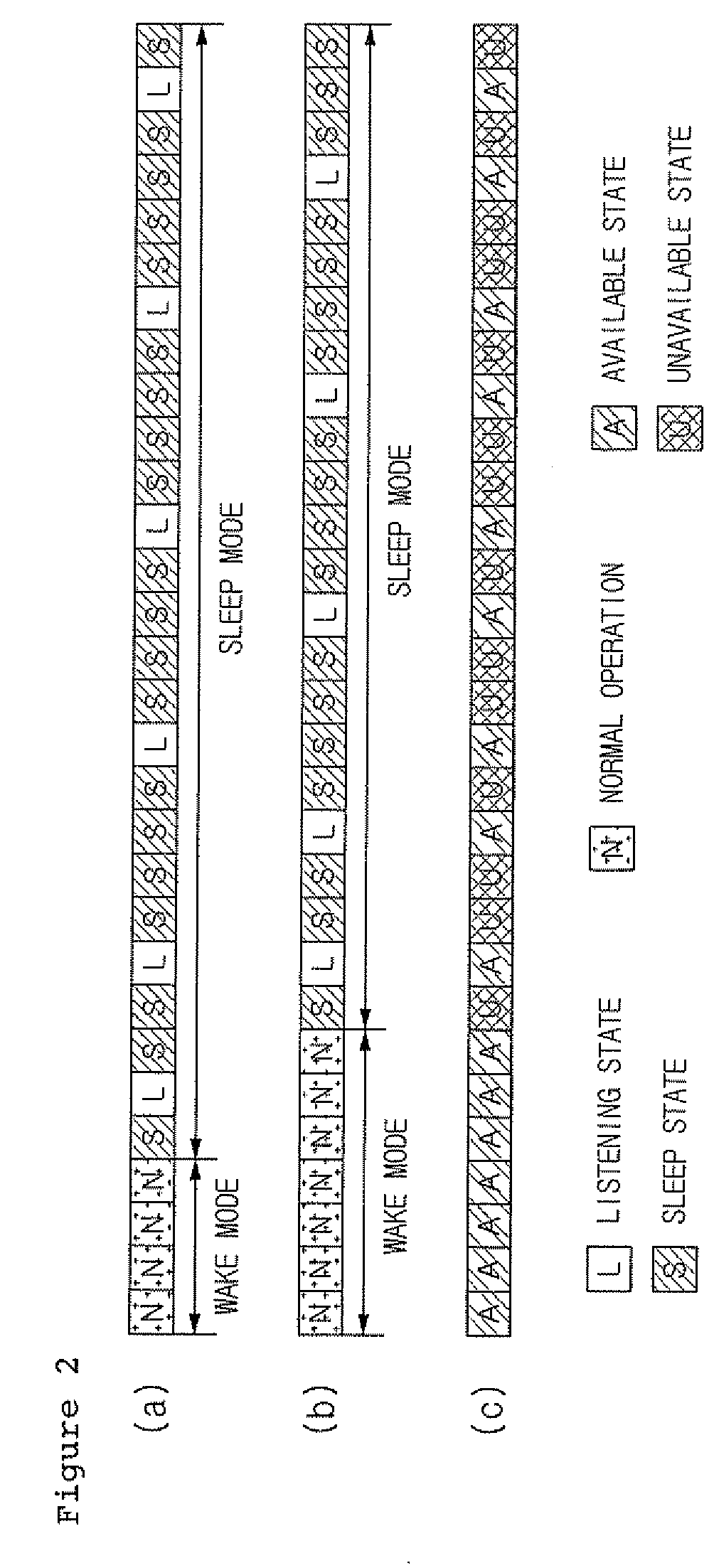Scheduled Power-Saving Method in IEEE 802.16e System
a power-saving mechanism and power-saving technology, applied in power management, loop networks, instruments, etc., can solve the problems of reducing the life of batteries, mobile stations moving to an available state, and consuming power
- Summary
- Abstract
- Description
- Claims
- Application Information
AI Technical Summary
Benefits of technology
Problems solved by technology
Method used
Image
Examples
Embodiment Construction
[0025]Exemplary embodiments of the present invention will be described in detail below with reference to the accompanying drawings. While the present invention is shown and described in connection with exemplary embodiments thereof, it will be apparent to those skilled in the art that various modifications can be made without departing from the spirit and scope of the invention.
[0026]Operation between a base station and a mobile station in a sleep mode defined in IEEE 802.16e will now be described with reference to FIG. 1.
[0027]When a first sleep period (T1) equal to a minimum sleep period has lapsed, the mobile station is put in a listening state to await an indication message from the base station. The indication message includes information indicating whether there is traffic to be transmitted from the base station to the mobile station during the sleep period. For example, a negative indication message indicates that there is no traffic (Protocol Data Unit (PDU)) to be transmitt...
PUM
 Login to View More
Login to View More Abstract
Description
Claims
Application Information
 Login to View More
Login to View More - R&D
- Intellectual Property
- Life Sciences
- Materials
- Tech Scout
- Unparalleled Data Quality
- Higher Quality Content
- 60% Fewer Hallucinations
Browse by: Latest US Patents, China's latest patents, Technical Efficacy Thesaurus, Application Domain, Technology Topic, Popular Technical Reports.
© 2025 PatSnap. All rights reserved.Legal|Privacy policy|Modern Slavery Act Transparency Statement|Sitemap|About US| Contact US: help@patsnap.com



